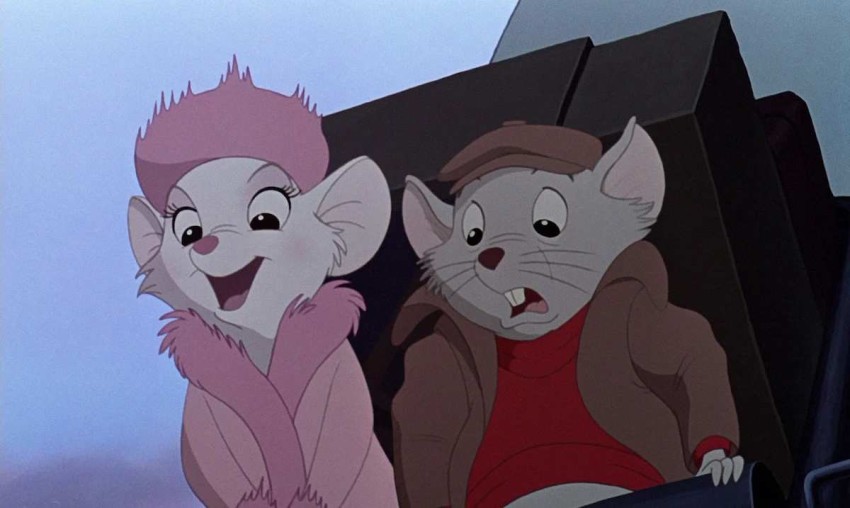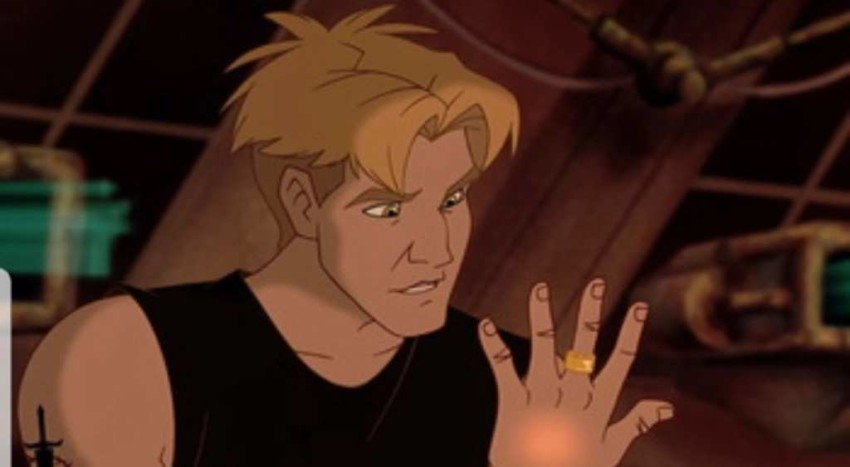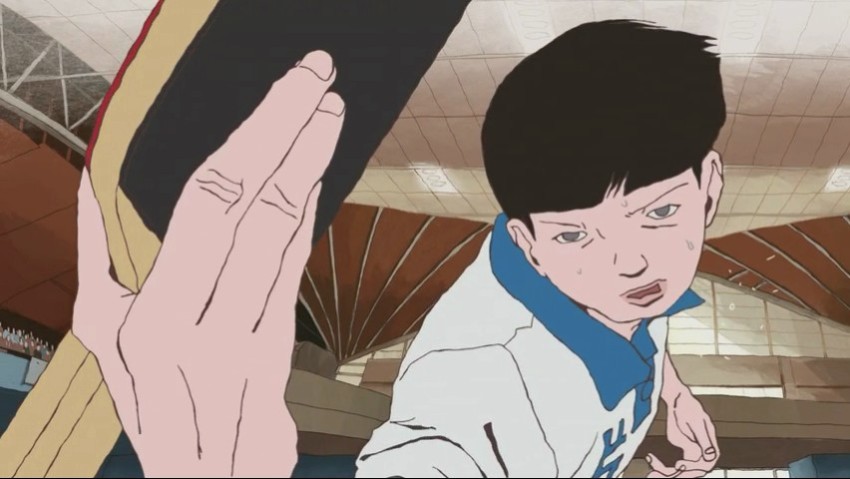CG in Anime
September 20, 2020 · 0 comments
By Andrew Osmond.
 Last year, the film magazine Little White Lies interviewed Shoji Kawamori, famed for his creative role in Macross. He was asked what future he saw for hand-drawn animation in anime. His reply was blunt. “I imagine,” Kawamori said, “that in about ten or twenty years, (hand-drawn animation) will be heading in the direction of Kabuki or Noh or other very old Japanese culture, as there are so many cases that wholly depend on the level of each artist’s specialised craftmanship.” Computer graphics, Kawamori said, was anime’s future. The rest of us had to live in it.
Last year, the film magazine Little White Lies interviewed Shoji Kawamori, famed for his creative role in Macross. He was asked what future he saw for hand-drawn animation in anime. His reply was blunt. “I imagine,” Kawamori said, “that in about ten or twenty years, (hand-drawn animation) will be heading in the direction of Kabuki or Noh or other very old Japanese culture, as there are so many cases that wholly depend on the level of each artist’s specialised craftmanship.” Computer graphics, Kawamori said, was anime’s future. The rest of us had to live in it.
When Macross debuted in 1982, the vast majority of animation round the world was hand-drawn, and CG was confined to experiments in films like that year’s Tron. That was still true when Akira opened, and still true when the first Ghost in the Shell debuted, though GITS used CG elements, meshed with traditional animation in a hard drive. Ghost premiered in Japan in November 1995. The same month, Pixar’s original Toy Story premiered across the Pacific.
A quarter-century later, anime, which was once promoted as a new kind of animation, increasingly seems like something else – a bastion of old-school, hand-drawn animation in a global sea of CG. Drawn animation seemed increasingly like the magic world in Spirited Away, a shadow cultural presence hidden behind high-tech Hollywood, an old bathhouse which only comes to life after dark.
Outside Japan, hand-drawn animation has passed through what one might call the medium’s “Judas” moment. (The name’s a steal from music history; Bob Dylan was heckled in 1966 at a concert when he brought out an electric guitar, with one disgruntled fan yelling the immortal insult, “Judas!”) Disney shuttered most of its traditional animation studios in the early 2000s; I’ll explain why below. Late gasps like 2009’s The Princess and the Frog weren’t enough to stop CG becoming the default, as the smash hits of Tangled and Frozen translated Disney Princesses into CG.
 In recent times, anime fans have experienced their own Judas moments. One was this June when the world’s most famous anime studio, Ghibli, released teaser images for its upcoming TV film Aya and the Witch, directed by Goro Miyazaki. Fan reaction was mixed at best. Some pundits deplored Ghibli’s move into “full” CG on principle. Others attacked what they saw as technically crude images. At least in Aya’s case, Ghibli has only released still images as of writing. Even fans who dislike them can hope the film might look better in motion.
In recent times, anime fans have experienced their own Judas moments. One was this June when the world’s most famous anime studio, Ghibli, released teaser images for its upcoming TV film Aya and the Witch, directed by Goro Miyazaki. Fan reaction was mixed at best. Some pundits deplored Ghibli’s move into “full” CG on principle. Others attacked what they saw as technically crude images. At least in Aya’s case, Ghibli has only released still images as of writing. Even fans who dislike them can hope the film might look better in motion.
That doesn’t apply, though, to a Netflix anime released in April. Ghost in the Shell SAC_2045 is the newest incarnation of the GITS franchise. It’s specifically a revival of the Stand Alone Complex series from the 2000s, but made in full 3D CG. The reaction, from fans and reviewers, was hostile. The show’s appearance was slammed for its crudities – for not being at a remotely acceptable standard for 2020, and for letting down the earlier, trad-animated incarnations of the series from more than 15 years ago.
Yet at almost the same time, two other new Netflix anime received far better press. One was the adult animal drama Beastars by Studio Orange. The other was the dark comedy-fantasy Dorohedoro by the MAPPA studio. Notably, both series looked much closer to traditional anime than Aya or SAC_2045, an approach which fans found palatable as they praised the shows.
I emphasise how these anime look, because the divisions between “CG” animation and “traditional” animation are as much about appearances as technical realities, and probably more. For an illustration, take Disney’s old cartoon feature The Rescuers Down Under (1990), released five years before Toy Story. That film was the first to be entirely made using the Computer Animation Production System, or CAPS, developed by a pre-Toy Story Pixar. CAPS integrated scanned artwork, CG elements and digital paint, and it ended Disney’s old method of filming physical cels.
 Significantly, Disney did not publicise this revolution at the start, because the studio feared consumer resistance. Alvy Smith, a legend of CG development, remembered Disney was worried that: “The magic would go away if people find out that computers are involved.” Though the average viewer would realise there was something different when they saw the Rescuers Down Under’s title sequence.Of course, Disney’s attitude changed when computer tech started creating spectacles like The Lion King’s wildebeest stampede, or the 3D ballroom in Beauty and the Beast.
Significantly, Disney did not publicise this revolution at the start, because the studio feared consumer resistance. Alvy Smith, a legend of CG development, remembered Disney was worried that: “The magic would go away if people find out that computers are involved.” Though the average viewer would realise there was something different when they saw the Rescuers Down Under’s title sequence.Of course, Disney’s attitude changed when computer tech started creating spectacles like The Lion King’s wildebeest stampede, or the 3D ballroom in Beauty and the Beast.
In Japan, the revolution began in a similarly hidden way, as chronicled in Chapter 10 of Anime: A History by Jonathan Clements. Toei Animation, Japan’s biggest animation studio, completed its own system in 1991, with a name that seemed to acknowledge its debt to CAPS. It was called CATAS, the Computer Aided Toei Animation System.
But the name you really need to remember is Celsys. A years after CATAS was completed, Celsys, a software developer, provided Toei with a set of computer animation tools. In Clements’ words, they “covered all the steps of the old analogue animation process”. For example, there was a tool called Stylos, which created digital “pencil” images. Celsys’ software rapidly spread beyond Toei, all through the anime industry.
In his recent memoir, Sharing a House With The Never-Ending Man, Steve Alpert describes the changeover at Ghibli. It happened in summer 1997, just after the release of the studio’s last cel film, Princess Mononoke (though even Mononoke had spectacular CG effects, and digital painting for the CG scenes). “The entire ink and paint section was gutted,” Alpert wrote. “The rows and rows of shelves containing a million shades of powdered colour in jars were replaced by banks of computer terminals.”
 At this point, anime was converging with Hollywood animation. Both industries were producing animation which looked traditional, which looked continuous with older cartoons, but which used new technology to blend in CG effects. (Some viewers, however, complained the “blends” could look ugly; one contentious case was Hollywood’s 2000 film Titan A.E). But in American films, the balance sheets soon pointed in one direction.
At this point, anime was converging with Hollywood animation. Both industries were producing animation which looked traditional, which looked continuous with older cartoons, but which used new technology to blend in CG effects. (Some viewers, however, complained the “blends” could look ugly; one contentious case was Hollywood’s 2000 film Titan A.E). But in American films, the balance sheets soon pointed in one direction.
A film like Disney’s Lion King had required hundreds of artists to make it. Later in the 1990s, competing Hollywood studios fought bidding wars, inflating those artists’ wages. Pixar’s Toy Story looked much less like a traditional cartoon than Rescuers Down Under or Lion King; it was animated entirely with 3D computer graphics. But it also required far fewer artists; Toy Story employed about a seventh as many as Lion King had done.
Then the early 2000s, two hugely expensive, quasi-traditional cartoon spectaculars flopped catastrophically: Disney’s Treasure Planet and DreamWorks’ Sinbad: Legend of the Seven Seas. That’s when the Hollywood studios shuttered their traditional animation departments, leaving the future to Shrek and The Incredibles.
In Japan, though, the industry took the opposite lesson from a different film flop. In the Anime Matsuri virtual festival in May, one of the guests was Shuzo John Shiota, the President of Polygon Pictures (I summarise his talk here). Shiota recalled how the anime industry reacted to the box-office flop of the 2001 film Final Fantasy: The Spirits Within. While the film wasn’t technically anime – Square Enix made it in Hawaii – its box-office failure made CG “not cool” in the industry.
Anime companies of the time hated CG animation, Shiota said. And whereas Hollywood execs looked to Toy Story as an exemplar of cost-efficient animation, Shiota said the anime companies looked to a recent mega-hit franchise that had cost far, far less than Spirits Within. They looked to Neon Genesis Evangelion.
 And so anime and Hollywood animation diverged again, most obviously in cinema animation. Most of the anime films in the last two decades have been made with digital technologies but old-school techniques, so that, for example, the digitally-produced Wind Rises doesn’t feel that different from the cel animation of Nausicaa or Totoro. When you’re watching a new anime film spectacle today – for example, Weathering with You, Promare or Children of the Sea – you’re watching something that’s not so different, technically speaking, from The Lion King (1994) or Treasure Planet.
And so anime and Hollywood animation diverged again, most obviously in cinema animation. Most of the anime films in the last two decades have been made with digital technologies but old-school techniques, so that, for example, the digitally-produced Wind Rises doesn’t feel that different from the cel animation of Nausicaa or Totoro. When you’re watching a new anime film spectacle today – for example, Weathering with You, Promare or Children of the Sea – you’re watching something that’s not so different, technically speaking, from The Lion King (1994) or Treasure Planet.
The biggest anime blockbuster film-maker today, Makoto Shinkai, revels in hybrid techniques. When he made Garden of Words, he told me, the droplets of rain in the air were particle simulations, while the ripples and spray were hand-drawn. By the time he made Weathering With You, Shinkai had stopped counting what was what. “I don’t even know which techniques the animators used for some parts,” Shinkai confessed to a London audience.
Of course, the divide between television animation in America and Japan is less stark. There are still many “traditional” TV cartoons in America, 2D rather than 3D, even if their actual animation is often made elsewhere. For example, large parts of the TV hits Steven Universe and Avatar: The Last Airbender were animated in South Korea.
However, American TV animation is also very open to 3D CG, which is why it was a lifeline for Polygon Pictures studio in the 2000s when much of the anime industry still shunned CG. At Anime Matsuri, Shiota talked about how Polygon could animate on American TV cartoons like Disney’s My Friends Tigger and Pooh (with a 3D CG Winnie the Pooh, blasphemous as that sounds). Another American animation, 2012’s Tron: Uprising, let Polygon develop the cel-shading techniques which informed the studio’s later anime, from Knights of Sidonia to Ajin.
And what of today? On the surface, little has changed. Most anime, whether for TV or cinema, still “looks” more or less traditionally animated. Meanwhile, Hollywood cinema animation is almost completely dominated by 3D CG a la Toy Story, though TV animation remains diverse.
But under the bonnet, “traditional” looking anime is continually updating its skillsets. In 2016, I interviewed the animator Aya Suzuki for this blog. She said then that anime remained very much paper-based, with drawings created on paper before they’re scanned and painted digitally – even though, as we saw, digital pencils were available to Japanese animators back in the early 1990s.
 Suzuki herself, though, was evangelising for a more comprehensively digital industry in anime. She argued that it let animators like herself work faster, and that it might even help animators get paid more without increasing anime budgets.
Suzuki herself, though, was evangelising for a more comprehensively digital industry in anime. She argued that it let animators like herself work faster, and that it might even help animators get paid more without increasing anime budgets.
Very significantly, one of the biggest anime directors today, Masaaki Yuasa, has gone entirely paperless, though his work still looks like joyously freehand drawing. All Yuasa’s anime from 2014’s Ping-Pong have been made with the animation software Flash. “Flash is really good,” he told me, “because you can create very crisp, beautiful lines, very smooth, and also zoom in and out… You can maintain original shapes when you expand an image.
“When I use Flash,” Yuasa added, “I try to keep the hand-drawn feel, and not make it too crisp. You can’t control the drawings as much as you can with hand-drawn animation, but if the animator is really good technically, you can just trust him or her.”
Yuasa’s comment about “keeping the hand-drawn feel” parallels Polygon’s approach, for all their anime’s obvious differences. After all, Polygon’s cel-shaded 3D CG style, as developed on America’s Tron: Uprising, is precisely meant to look not that far from traditional anime.
Yuasa and Polygon are also in synch with Studio Orange, creator of Beastars. The studio’s founder Eiji Inomoto told Anime News Network in May that “Being among one of the animation companies of Japan, we try to emphasise the appearance and feel of hand-drawn animation.” As for MAPPA’s Dorohedoro, mentioned earlier, that was reportedly a hybrid of 2D and 3D, with staff in each discipline working closely with each other.
Now let’s return to Kawamori’s startling-seeming comment at the top of this article. The Macross creator may not have been implying that anime ten years from now will all look like cut-price Pixar, or like Ghost in the Shell SAC_2045.Or that they’ll look like Beastars or Dorohedoro, for that matter.
Kawamori referred to “the artist’s specialised craftmanship,” the changing skillsets that artists learn on tools which are still evolving. But that’s a different question from how, and whether, the anime they make will look different. The new anime won’t, for example, necessarily have to use games-style motion capture. The anime made by Polygon and Orange do, but Yuasa’s studio Science Saru doesn’t need it.
Nor did the proudly comic-bookish Spider-Man: Into the Spider-Verse, one of the most acclaimed Hollywood animations in recent years. The Oscar-winning superhero film suggests that, after twenty years’ separation, anime and Hollywood might be converging again. Anyone whose seen Spider-Verse knows how close it feels to anime sensibilities, and not just because of the kawaii girl Peni Parker. Indeed, the film’s technical influences included Land of the Lustrous, the show Orange made before Beastars.
Let’s end on remarks by another legend of old-school anime. After seeing Spider-Verse, Gundam creator Yoshiyuki Tomino shared his feelings on the film with Japanese university students. “If you’re going to work in anime, that’s what I want you to outdo,” Tomino said. “I’d be very happy if you were to make something that could beat it.”
Andrew Osmond is the author of 100 Animated Feature Films.
Leave a Reply